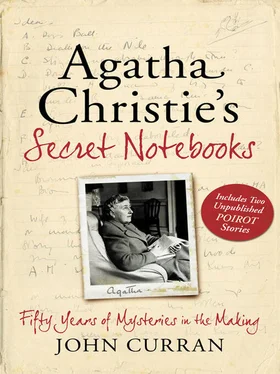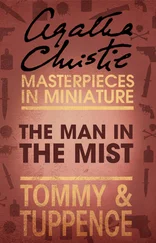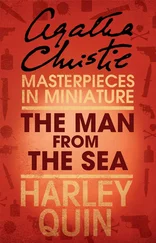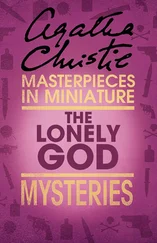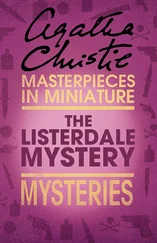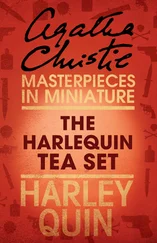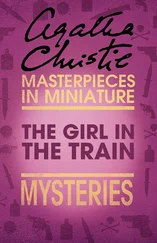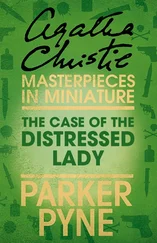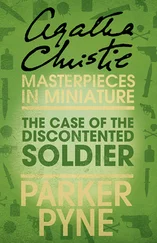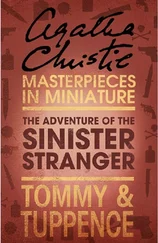Agatha Christie - The Capture of Cerberus
Здесь есть возможность читать онлайн «Agatha Christie - The Capture of Cerberus» весь текст электронной книги совершенно бесплатно (целиком полную версию без сокращений). В некоторых случаях можно слушать аудио, скачать через торрент в формате fb2 и присутствует краткое содержание. Год выпуска: 2009, ISBN: 2009, Издательство: HarperCollins, Жанр: Классический детектив, на английском языке. Описание произведения, (предисловие) а так же отзывы посетителей доступны на портале библиотеки ЛибКат.
- Название:The Capture of Cerberus
- Автор:
- Издательство:HarperCollins
- Жанр:
- Год:2009
- ISBN:978-0007310562
- Рейтинг книги:3 / 5. Голосов: 1
-
Избранное:Добавить в избранное
- Отзывы:
-
Ваша оценка:
- 60
- 1
- 2
- 3
- 4
- 5
The Capture of Cerberus: краткое содержание, описание и аннотация
Предлагаем к чтению аннотацию, описание, краткое содержание или предисловие (зависит от того, что написал сам автор книги «The Capture of Cerberus»). Если вы не нашли необходимую информацию о книге — напишите в комментариях, мы постараемся отыскать её.
В составе книги примечания редактора и предисловие.
Книга на английском языке.
The Capture of Cerberus — читать онлайн бесплатно полную книгу (весь текст) целиком
Ниже представлен текст книги, разбитый по страницам. Система сохранения места последней прочитанной страницы, позволяет с удобством читать онлайн бесплатно книгу «The Capture of Cerberus», без необходимости каждый раз заново искать на чём Вы остановились. Поставьте закладку, и сможете в любой момент перейти на страницу, на которой закончили чтение.
Интервал:
Закладка:
Agatha Christie
The Capture of Cerberus
It has always been a minor mystery to Christie scholars why ‘The Capture of Cerberus’ did not appear in The Strand magazine after the other 11 Labours, as it seemed an inexplicable omission. The discover,’ of a hitherto unknown and unpublished version of the story, with a completely different setting and plot, may now allow us to solve this puzzle.
In ‘The Capture of Cerberus’ Poirot once more looks for a missing person, and in this respect his twelfth Labour resembles similar missions in ‘The Lernean Hydra’ and ‘The Girdle of Hyppolita’. But there all similarity’ ends, as this final task has an unprecedented aspect—his quarry is dead.
Although Collins Crime Club eventually published The Labours of Hercules on 8 September 1947, with Christie adding an introductory Foreword to explain the rationale for Poirot’s undertaking (see Chapter 11), the twelfth story’s non-appearance in The Strand remained puzzling. The magazine had always provided a ready market for Christie short stories throughout the 1930s and into the 1940s, with her name emblazoned on the cover as a selling point. Christie herself explicitly mentions this story in the Foreword to the 1953 Penguin edition of The Labours of Hercules when she explains that in the writing of the stories, ‘over the final Capture of Cerberus I gave way completely to despair’. She left it aside for six months and ‘then suddenly, one day coming up on the escalator on the Tube the idea came. Thinking excitedly about it, I went up and down on the escalator about eight times.’ But, as we shall see, while this may be the truth, it is not the entire truth…
When was it written?
Labours one to eleven were first published in the UK in The Strand magazine beginning in November 1939 (‘The Nemean Lion’) and culminating in September 1940 (‘The Apples of the Hesperides’). On 12 January 1940 Edmund Cork wrote to Christie about the twelfth story, explaining that he thought that The Strand would not publish it (at this stage they had already published three of them) and suggesting that she think about writing a replacement for eventual book publication. The Strand had already paid £1,200 for the stories as written and if they decided not to publish one of them, as they may have indicated to Edmund Cork, they were not entitled to look for a replacement. On 12 November 1940 (after The Strand had appeared without ‘Cerberus’) she wrote to ask for the return of ‘the Cerberus story’ in order ‘to do a new one’. But it was not until 23 January 1947 (i.e. early in the year of the book’s publication) that the second version was finally submitted.
Notebook 44 contains most of the notes for all 12 of the stories. At first glance it seems that they were all plotted and finished together, as most of the notes tally with the finished Labours as we know them. But a closer examination, in light of the discovery of the alternative version and this correspondence, shows a potentially different story. The initial notes for the last half-dozen stories all begin, and in some cases finish, on a right-hand page of Notebook 44 with the left-hand page left blank, and follow the sequence of the book. Notes for the first and hitherto unpublished version of ‘Cerberus’ follow this pattern. But the notes for the collected one are inserted, in different ink and slightly different writing, on a left-hand page, sandwiched, out of sequence, between those for ‘The Horses of Diomedes’ and ‘The Flock Of Geryon’. It is not unreasonable to suppose that, when inspiration for the revamped story struck, Christie went back to her original notes and inserted her new idea as near as she could to the original. Also, the later notes are written in biro, whereas the original notes are, like those for all the other Labours, in pencil.
Why was it never published?
There can be little doubt that the political situation of the time and the poorly disguised picture of Adolf Hitler in section iii was the main (and probably only) reason for the rejection of the story. Unusually for Christie, it is blatantly political from the first page, mentioning not just the impending war but also the previous one: ‘The world was in a very disturbed state—every nation alert and tense. At any minute the blow might fall—and Europe once more be plunged in war.’ Later in the story we are told about ‘August Hertzlein…[who] was the dictator of dictators. His warlike utterances had rallied the youth of his country and of allied countries. It was he who had set Central Europe ablaze…’ And in case there is any lingering doubt he is later described as having ‘a bullet head and a little dark moustache’.
This would have been considered much too close to the actual state of the world and one of its inhabitants in 1939 to be considered escapist reading. Why Christie chose to write this story will never be known, as there is little evidence elsewhere in her work that she was particularly political. And the rejection by The Strand may have rankled more than she cared to admit as this very assassination scenario is utilized in the ‘Good Fat Hen’ chapter of One, Two, Buckle My Shoe , published the following year while the Countess Vera is fondly recalled by Poirot in the ‘Maids Are Courting’ chapter of the same novel. The writing of novel and short story would have been contemporaneous.

Two pages showing the two sets of notes for ‘The Capture of Cerberus’. The left-hand page (Notebook 44) refers to the version published in The Labours of Hercules , and the right-hand page (Notebook 62)…

…to the newly-discovered earlier version included in the Appendix. Note the difference in handwriting over the almost 10-year period.
In an interview for her Italian publishers, Mondadori, conducted soon after the publication of Passenger to Frankfurt in 1970, she writes, ‘I have never been in the least interested in politics.’ So why did she not simply tone down the portrait and change the name? Ironically, Chapter 17 of that novel contains more than a passing reference to the main idea of the short story. Is it possible that, 30 years after it had been rejected, Agatha Christie unearthed her idea and inserted it into a very different book? And that, long after The Strand had ceased publication, she had the last laugh?
‘The Capture of Cerberus’ (unpublished version) in the Notebooks
There are notes to the unpublished version of the story in Notebooks 44 and 62: Cerberus
Does Poirot go to look for 2 friends supposedly dead
Lenin Trotsky Stalin
George II Queen Anno
Must go unarmed (like Max Carrados in room story)
Poirot and Vera Rossakoff—says to a friend—‘he brings people back from the dead’
Dr Hershaltz
Hitler made a marvellous speech—I am willing to die— and falls shot—a boy. Two men each side of him—surprise him—revolver in hand. The boy was my son—I want him brought back to life.
Father Lavallois—his convert—he planned to speak—a great meeting—to propose International Disarmament. Dr Karl Hansberg—compiles stastistics—letter of introduction from…medical authorities in Berlin—doctor in charge lured away by religion—nurse tries to prevent him. Herr Hitler—hands him a card.
Читать дальшеИнтервал:
Закладка:
Похожие книги на «The Capture of Cerberus»
Представляем Вашему вниманию похожие книги на «The Capture of Cerberus» списком для выбора. Мы отобрали схожую по названию и смыслу литературу в надежде предоставить читателям больше вариантов отыскать новые, интересные, ещё непрочитанные произведения.
Обсуждение, отзывы о книге «The Capture of Cerberus» и просто собственные мнения читателей. Оставьте ваши комментарии, напишите, что Вы думаете о произведении, его смысле или главных героях. Укажите что конкретно понравилось, а что нет, и почему Вы так считаете.
